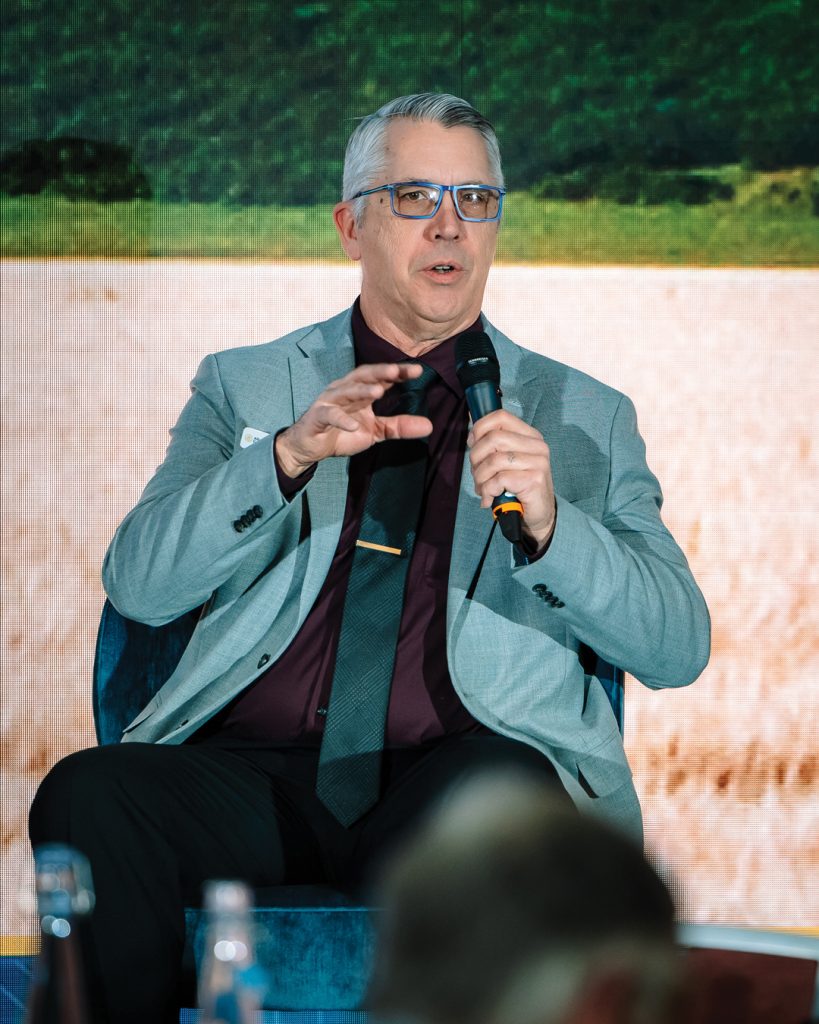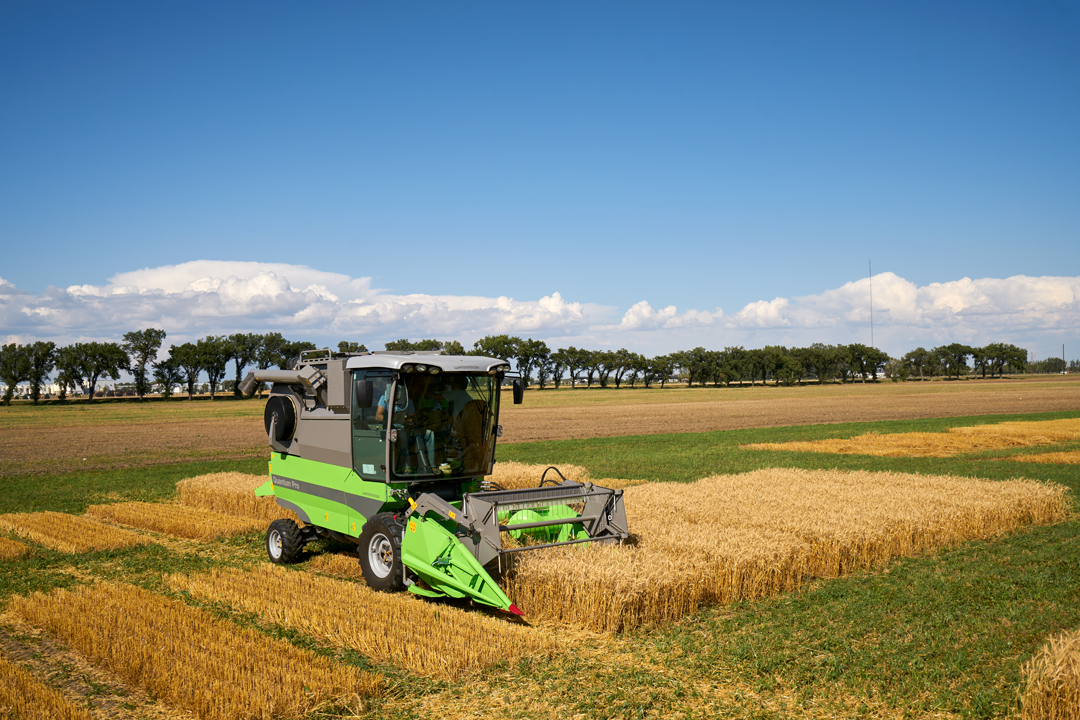IS BREEDING BROKEN?
BY MELANIE EPP • LEAD PHOTO COURTESY OF FARMING SMARTER
Built on strong variety development, Canadian grain has a solid reputation for high quality. However, industry experts increasingly warn this has been put at risk by waning investment, a cumbersome variety registration process and plant breeders’ rights that are often criticized as weak.
Funded almost entirely by government grants and farmer check-off dollars, the wheat and barley varieties developed by public breeding programs produce serious dividends for farmers. This has resulted in little support for private sector growth. While dollars available for private breeding have been limited, government funding for public programs has been tenuous at best. The federal government continues to withdraw support even though a private sector backstop doesn’t exist.
Private breeders complain the Plant Breeders’ Rights Act doesn’t ensure adequate return on investment. As a result, all but one major player have left the marketplace. Private breeders describe the variety registration process by the Canadian Food Inspection Agency (CFIA) as onerous and say it stymies innovation rather than cultivates competition.
These issues must be addressed, they believe, and the playing field levelled between public and private breeding to secure Canada’s ongoing leadership in world grain production.

DECLINING SUPPORT, TOUGH CONVERSATIONS
Canada’s success in the global cereals market is largely due to its world-class breeding programs. For every dollar invested, barley and wheat farmers reap 26 and 33 times that in profits, respectively. Though public breeding programs do not require return on investment to continue their work, inconsistent and uncertain funding are problematic. New barley and wheat varieties take 10 to 15 years to develop, yet funding is delivered in five-year cycles during which time governments change and purse strings often tighten.
Lauren Comin, Seeds Canada director of policy, said the concerns of private breeders are valid and farmers should share them. In her judgment, the system has been broken for more than a decade.
In 2013, Comin took on the role of research manager at the Alberta Wheat Commission. At that time, Agriculture and Agri-Food Canada (AAFC) signalled its intention to pull out of the pre-commercialization breeding stage. The government’s proposed solution was to transfer cereal germplasm to private sector partners for finishing, as it had done with canola. “Obviously producers got very upset,” she said. “Government eventually walked this messaging back, but they have not provided the financial and strategic support to the capacity needed to have a fully functioning, efficient program since then.”
According to Comin, not much has changed since 2013. Government continues to pull back on funding and “send signals” that it wants to exit pre-commercialization entirely. She believes it’s not an idle threat, so she’s pushing industry to create a safety net that starts with building private sector capacity. “If we have a gap, we’re not going to notice it until the very end when nothing comes out of that pipeline for multiple years,” she said. “Given the competitive landscape we’re in, in terms of producing commodities, we can’t afford that.”

BUILD PRIVATE SECTOR CAPACITY
The first step to build private sector capacity is controversial but necessary, said Comin. She believes the seed sector must implement a universal royalty-based system to create fair treatment and equal opportunity for public and private players.
This suggestion is not new. In 2018 and 2019, AAFC and the CFIA held consultations on the possible introduction of a royalty system on harvested grain (end-point royalty) or farm-saved seed (trailing royalty) on cereals. The consultation sought input from stakeholders about the placement of conditions on farmers’ privilege to pay fair compensation for saved and re-sowed seed. The consultation concluded with no consensus among stakeholders.
In 2020, after much deliberation, the sector finalized the Variety Use Agreement (VUA). The hope was that VUA would drive investment. Under VUA, farmers pay a fee each year they grow farm-saved seed of a protected variety. VUA now applies to just 27 varieties. Except for an oat variety grown in Eastern Canada, none are AAFC varieties. Given the choice between a VUA-protected private variety and an AAFC variety with no fee, it’s likely most farmers would choose the latter.
“This creates a competition issue,” said Comin. Certified seed offers another means of financial support for breeders. Produced by dedicated seed growers, its production is bound by stringent requirements. Prior to commercialization, seed is carefully inspected for quality, varietal purity and germination.
Just 20 per cent of western Canadian cereal farmers purchase certified seed. Most of the remaining 80 per cent use farm-saved seed without a VUA. Very little economic support trickles back to breeders. “When a farmer saves their seed—and that privilege is enshrined in our Plant Breeders’ Rights legislation— they are generally not paying for the use of that innovation,” said Comin.
Dean Hubbard, Alberta Grains Region 1 director, has always seen value in the purchase of certified seed but worries privatized cereal breeding will raise the cost of production. Since canola breeding moved to the private sector, he hasn’t seen marked improvement in new varieties. “We haven’t seen changes in yield in many years,” he said. “But the price of canola seed continues to rise every year. When I pencil in canola, I know I’m going to lose money, but I need it for the rotation. That’s the concern a lot of farmers have with private breeding. Having quality product is one thing, but can we afford to grow it?”
In the mid-to-late 1990s, as private sector investment in canola breeding grew, AAFC shifted its focus from developing field-ready varieties to upstream research, according to Stéphanie Blais, AAFC communications advisor. The private sector’s advances in hybridization and herbicide resistance led to better-performing canola, prompting the government body to shift its focus to early-stage breeding, such as trait and germplasm development. This ensured continued innovation while allowing private companies to develop competitive hybrids, said Blais.
Today, AAFC supports canola improvement through pre-breeding efforts, including disease resistance and genetic diversity and provides germplasm under collaborative and licensing agreements to accelerate industry breeding programs.
Blais said AAFC hopes to take a similar approach with cereals. The aim is to become an innovation partner rather than a direct competitor in cereal breeding as the sector works to build external capacity. “Because AAFC is one of the few players in cereal breeding, building substantial capacity outside of AAFC and other publicly funded breeding programs will take time,” she said.
The department continues to engage with stakeholders, farmers and industry leaders to develop a transition strategy. “Although other countries have undergone similar evolutions, and we can benefit from lessons learned, we will create a made-in-Canada solution that reflects the needs of the Canadian agricultural sector,” concluded Blais.
Hubbard isn’t naive about government’s role and is concerned about its waning support. “Farmers need to be aware of what’s happening,” he said. “We all need to be involved in figuring out a solution.”
PRIVATE BREEDERS WEIGH IN
As a 2020 Nuffield Canada scholar, independent plant breeder Jodi Souter of J4 Agri-Science examined the opportunities and obstacles faced by Canadian plant breeders. She compared these with the experiences of their peers in Argentina, Australia, New Zealand, Switzerland, the U.S., Uruguay and Zimbabwe.
In her preliminary findings, she identified three main obstacles faced by private plant breeders in Canada. These include: onerous regulatory procedures, lack of an industry-wide royalty collection system and skewed perceptions about private plant breeding among industry stakeholders from farmers and funders to public breeders. As a private plant breeder, she finds the excessive red tape and economic uncertainty is worrying. On average, it takes two to four years to register a new variety. The process is expensive, and a private breeder can’t recoup investment until it’s complete.
Some argue arbitrary requirements within the registration process increase uncertainty. Some of the countries Souter studied, such as New Zealand and the U.S., don’t require registration trials. In comparison, the multi-year waiting period in Canada is a serious impediment. “For private breeders, especially startups, if you have to be pre-revenue for 15 years instead of 12 years, that could easily be the end of your company,” she said.
While registration takes time and money, the merits by which new varieties are judged is also challenging for private breeders. Much of Souter’s work is in flax development. She said the merits used to determine quality are restrictive and don’t take into consideration regional needs. “If the merits were developed based on my breeding program, its likely competitor lines would not pass,” she said. “Different breeders, farmers and markets value different traits. If we force all varieties to look the same, new and interesting traits for farmers or consumers may not end up being explored.”
Souter suggested these challenges could be addressed by the adoption of a registration system that bypasses pre-registration testing and merit assessment. It would instead require only basic registration now laid out in the Seeds Regulations. “Western Canada is big enough we could sustain more options,” she said. “With competition, we’ll get more options, more traits of interest.”
Jim Dyck of Oat Advantage in Saskatchewan has made similar observations about the registration process, but he’s less critical than others. He and his wife Laura-Lee have been breeding oat varieties since 2008. Being a small-scale breeder has allowed them to explore new and groundbreaking territory. For example, they’ve developed varieties with high oat kernel uniformity and high protein, traits that garner considerable interest from millers. They’re also developing oat strains that reduce the crop’s carbon footprint. “There are lots of challenges, but we’re still here, and the future has some very bright spots,” said Dyck.
Optimism aside, Dyck is sometimes discouraged by the registration process. In 2023, his high protein oat line, OT6083, was initially voted down because it didn’t meet yield criteria. The following year, Dyck pushed back with industry support from Avena Foods and the Saskatchewan government. That same year, PepsiCo brought forward a high protein oat that also narrowly passed. “The fact that we both were working on high protein oat seemed to be a factor that also helped us both to get the vote, narrowly,” said Dyck. “It was kind of odd. When you’re trying to innovate, there really shouldn’t be any barriers.”
Despite its intricacies, Dyck believes Canada’s registration process offers value to farmers. “Registration challenges are part of making you do a good job,” he said. “As a small private company, everything we do matters financially to us. If we have a variety that doesn’t get registered for some reason, we don’t get a paycheque.”
Kenny Piecharka of KWS Seeds Canada raised similar concerns about the lengthy variety registration process. A large-scale seed breeding company from Germany, KWS entered the Canadian market in 2022 with its hybrid rye seed. Canada’s complicated registration system keeps the company from breeding seed in the country. Its hybrid rye, which has a single-use agreement, was only developed and tested here. “If you have to spend 10 years developing a product, then three years of registration without confidence you will be able to hit that specific mark, that’s a significant restriction,” he said. “It’s seen as a lot of risk with little reward.”
Piecharka believes a balance between regulatory oversight and market-driven innovation is needed to ensure high-performing varieties reach farmers efficiently. Farmers and end-users will ultimately hold breeders accountable for delivering on performance expectations, he said.
Enforcement of Canada’s plant breeders’ rights also needs improvement, said Piecharka, as fair compensation for breeding efforts remains a challenge and adoption of certified seed remains low. “We need to do a much better job of promoting the value of certified seed, and we need to achieve clarity on how we collect royalties,” he said. “A well-defined royalty collection strategy is needed to ensure fair compensation for breeders while maintaining affordability for farmers. Industry-wide collaboration will be key to making this happen.”
OTHER APPROACHES
Few people are better positioned to talk about the transition from public to private breeding than Jason Reinheimer, head of cereals and pulses research at Limagrain Field Seeds in France. His decades-long career has taken him from his native Australia to Canada and on to Europe. Reinheimer learned the value of private breeding efforts as a student. When he enrolled in plant breeding at the University of Adelaide, Australia’s public plant breeding programs were underfunded and underappreciated. By the time he graduated, the sector had undergone a radical transformation.
Created in 1990, the Grains Research and Development Corporation (GRDC), the federal equivalent of Canada’s combined grain commissions, had tendered for the development of three for-profit public corporations that would invest revenues from end-point royalties to fund wheat breeding. The move allowed the GDRC to shift its focus to the use of levy-based funding for pre-breeding research efforts. Three forprofit public corporations were created: Australian Grain Technologies (AGT), HRZ Wheats and InterGrain. GDRC became a key shareholder in the newly developed companies.
Reinheimer recalls his father’s frustration at the time. A farmer of grains and pulses in southeastern Australia, he thought the old system worked just fine and didn’t understand why he had to pay for the same variety twice. Reinheimer explained end-point royalties would give plant breeders adequate budget to deliver improved varieties, and farmers wouldn’t have to pay twice once the transition was complete.
In 2004, while Australia’s public-to-private transition was in its infancy, Reinheimer became a wheat and triticale breeder at AGT. Farmers still had good reason to grumble. Newly marketed varieties weren’t much better than the old ones. That is, until 2008 when AGT released Mace, a wheat variety with a disease package better than most other varieties on the market. It became eligible for the top wheat quality grade, and within three years, Mace took 50 per cent market share and was declared Western Australia’s benchmark for yield.
While they had to pay $3 per tonne in end-point royalties, farmers reaped 30 times that in additional profits. “With the value delivered in this new variety, industry [attitudes] turned almost overnight as farmers had never seen this large jump in variety performance; something that is the norm today,” said Reinheimer. Following nearly 12 years at AGT, he took a job as senior breeder at Limagrain Cereals Research in Saskatchewan. In Canada, he realized breeding the best varieties wasn’t going to be enough. “It was going to take the industry to change the way they were supporting plant breeding for us to be able to deliver value to Canadian farmers in the longer term.”
TIME FOR CHANGE
Canada’s top grain-producing competitors have strengthened intellectual property rights, bolstered investment in breeding efforts and relaxed once-taxing varietal registration schemes. In contrast, critics of the Canadian system describe it as paralyzed by underfunding and overregulation.
Comin emphasized government must either get behind public breeding programs 100 per cent or revamp the system to build private sector capacity. To incentivize private breeding companies to operate in Canada, she suggested farmers could pay end-point royalties or VUAs on farm-saved seed rather than check-offs.
“The registration system, in my eyes, absolutely needs a revamp,” she said. End-users may demand certain qualities, but registration criteria may block the approval of a variety that suits their needs. The process also generates complaints that new varieties are too similar. “Sometimes these archaic structures are just no longer suited for the reality of modern agriculture,” she added.
Comin didn’t mince words about what holds Canada back. “Government has said until producers are ready for this, we’re not going to move,” she said. “Someone has to show leadership, and I would say that is going to have to be the government. Change is hard, and this is a big change. It’s going to take some leadership and some truth telling.”







Comments